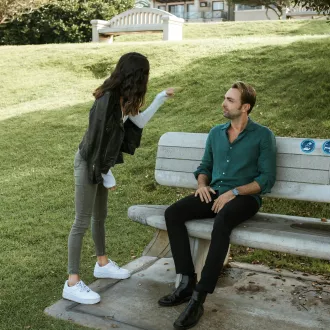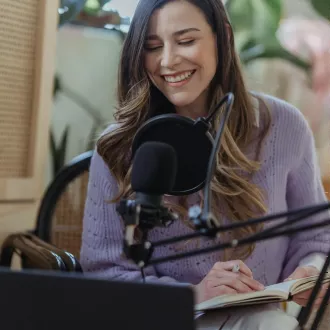Transcription Exercises to improve nonverbal communication
Nonverbal communication is the transmission of information without words through visual and auditory signals. These signals can include posture, gestures, gaze, tone of voice and intonation. It is important to keep in mind that nonverbal communication can influence verbal communication and vice versa. Therefore, improving nonverbal communication can have a positive impact on overall communication in the couple.
At this point, some practical exercises will be presented that can help improve nonverbal communication in the couple. These exercises are easy to perform and do not require special skills. In addition, they can help the couple feel more connected and understand each other better.
Observe posture: The first exercise to improve nonverbal communication is to observe posture. Posture can be an important indicator of a person's emotional state. For example, a closed, slouching posture may indicate shyness or insecurity, while an open, upright posture may indicate confidence and assurance. In a couple, observing posture can help to understand how the other feels in different situations.
To perform this exercise, the couple can sit facing each other and observe each other's posture. They can ask themselves how the other is feeling at that moment and how their posture reflects that emotional state. They can also try to imitate each other's posture to better understand how the other is feeling.
Look into each other's eyes: The second exercise to improve nonverbal communication is to look into each other's eyes. The gaze is an important indicator of attention and interest. When a person looks into another person's eyes, it shows that he or she is paying attention and is interested in what the other person is saying. In a couple, looking into each other's eyes can help create a deeper connection.
To do this exercise, the couple can sit across from each other and look into each other's eyes for a few minutes. They can ask each other how they feel as they look into each other's eyes and how the gaze reflects that emotional state. They can also talk about important issues while looking into each other's eyes to create a deeper connection.
Practice facial expression: The third exercise to improve nonverbal communication is to practice facial expression. Facial expression is an important indicator of a person's emotional state. For example, a smile may indicate happiness or joy, while a grimace may indicate disgust or anger. In a couple, practicing facial expression can help to better understand how the other feels in different situations.
To perform this exercise, the couple can practice different facial expressions in front of each other. They can imitate different emotions and talk about how it feels when they experience those emotions. They can also practice facial expression while looking into each other's eyes to better understand how facial expression reflects emotional state.
non verbal




